Welcome To A Visual Tour Of Our Church
| All Saints had its humble beginnings in 1918 on Avenue “A”, moving to West Street in 1950. |
 |
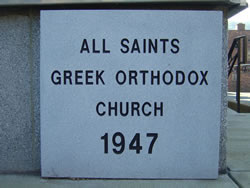 |
Okay, new construction was started in 1947… |
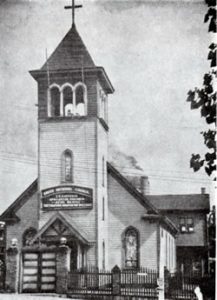 |
…but the new church was opened in 1950. |
| The new facility was a beautiful byzantine structure complete with bell tower and dome. |
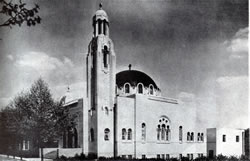 |
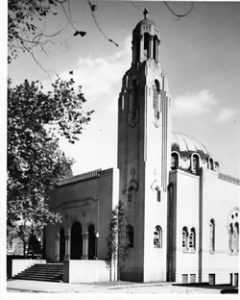 |
Exterior renovation began in 1967 that included covering the Bell Tower and Dome with Stainless Steel. Interior renovations over time included new Iconography and Terrazo work. |
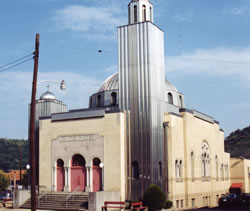 |
This is how the church looked from the late ’60’s until 2003. |
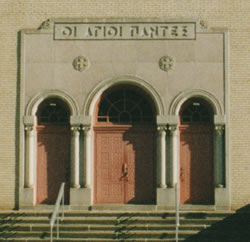 |
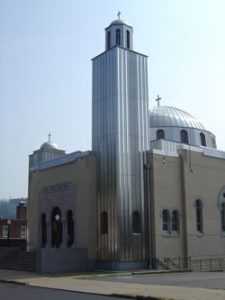 |
This is how the exterior of the church looked before the addition of the elevator annex. |
 |
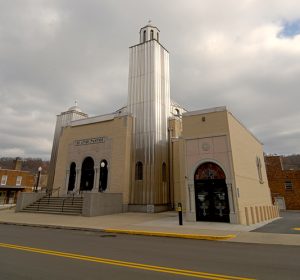 |
And this is the exterior of the church in 2017, after the addition of the elevator annex. |
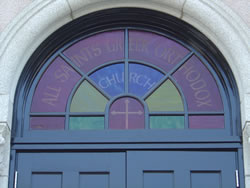 |
Welcome to All Saints Greek Orthodox Church Today!

The Narthex is your first place of entry. Therein you will find…
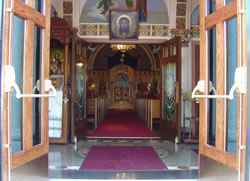
| …a Proskinitarion to your left, | and the Pangari and Candle Box to your right. |
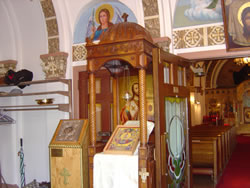 |
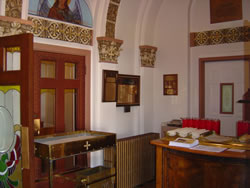 |
The two-headed Byzantine Eagle, symbol of the unity of both Church and State in the Byzantine Empire adorns the entry into the Narthex of the Church.
The detail of the Terrazo Iconography is beautiful to behold.

Moving from the Narthex into the Nave, you will note the beauty and ornate imagery of a byzantine-style church
as you move from the West end of the Nave towards the East-end Sanctuary.
 |
 |
 |
As your eyes are drawn upwards towards the heavens, you will see…
The Platytera – this is one of the most evangelical Icons in an Orthodox Church!
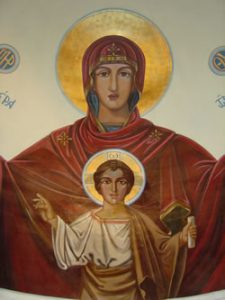
We see Mary, the Theotokos (God-bearer) inviting all of humanity to come towards her Son, our Savior and Lord Jesus Christ. The Icon is called the Platytera,
a poetic phrase meaning, “More spacious than the heavens,” for she contained within her womb the Creator of Heaven and Earth.
Next, we see a smaller Icon of The Ascension of Christ, forty days following His resurrection from the dead.
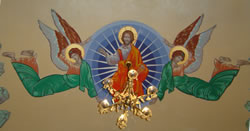
Christ, our God, ascended into the heavens and sits at the right hand of the Father, governing over all of Creation.
This understanding of our Lord’s position in the heavenly realm is depicted in the center of the dome in an Icon called
The Pantocrator

In this Icon we see Christ as both shepherd and judge, blessing all of creation with His right hand, and holding the book of Judgement in His left.
Byzantine architecture and liturgical art include a variety of forms including Iconography as seen above (canvas or painting on walls), Terrazo or mosaic tile, panel Icons, stained glass, molded concrete, cloth embroidery and more. All Saints Church contains all of these forms. A sample of some of these forms follows.
Within the Church you will find…
Stained Glass
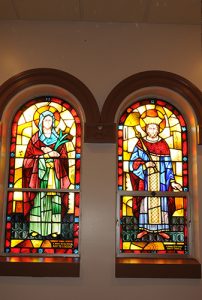 |
 |
 |
Carved Wood
Sculptured by one of our parishioners…
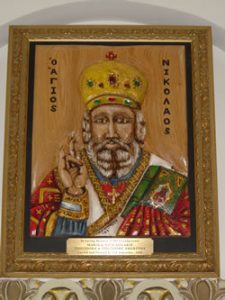 |
 |
Moulded Concrete in Relief
How many images and animals can you identify?
 |
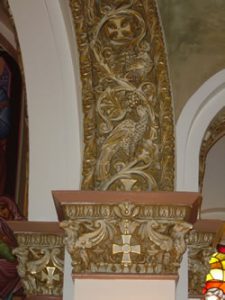 |
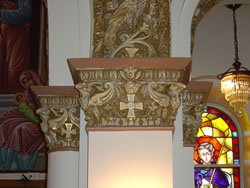 |
 |
Canvas on Walls
Including Evangelists: Matthew, Mark, Luke, & John, located in the arched columns supporting the Dome…
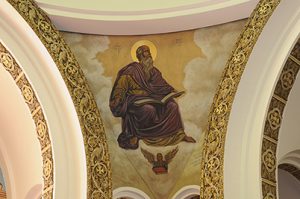 |
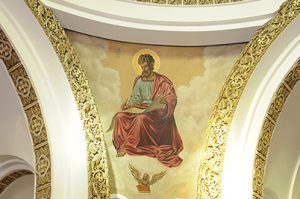 |
 |
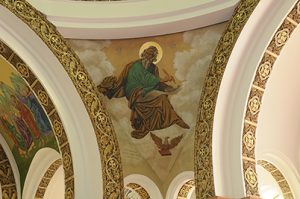 |
The following 1918 canvasses were moved from the original church. They include:
St. Ermioni, daughter of St. Philip the Deacon, and St. Aimilianos the Confessor.
Archangels (Including a quick makeup touchup before the photo shoot…)
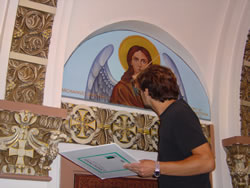 |
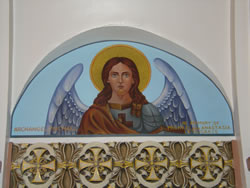 |
Paneled or Framed Icons
St. Photini the Samaritan Woman
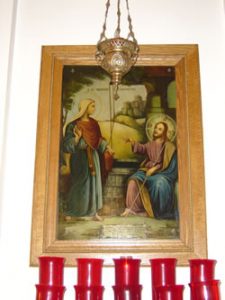
And of Course, St. Paul speaking to the workers of Weirton Steel
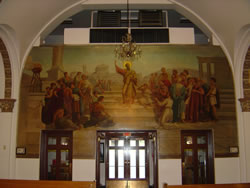
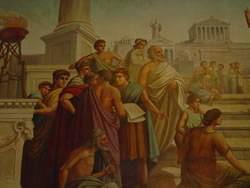 |
 |
See the Blast Furnace?
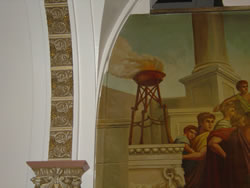
There’s More…
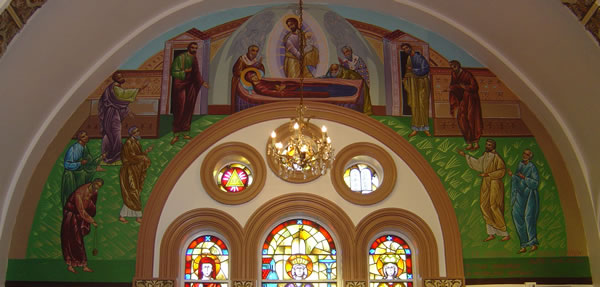
But you will have to visit us to see them!
Come visit us soon.
